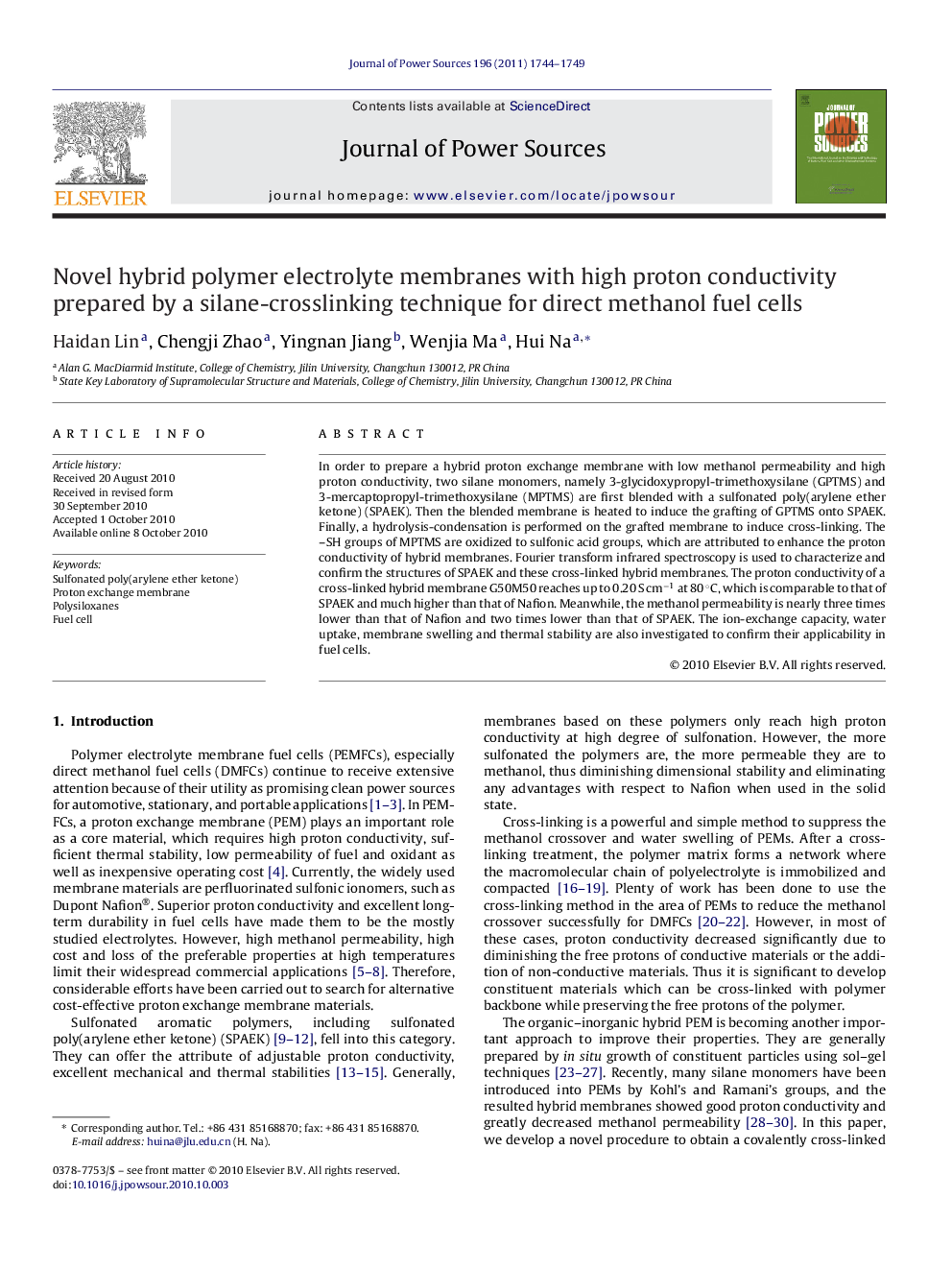| Article ID | Journal | Published Year | Pages | File Type |
|---|---|---|---|---|
| 1288830 | Journal of Power Sources | 2011 | 6 Pages |
In order to prepare a hybrid proton exchange membrane with low methanol permeability and high proton conductivity, two silane monomers, namely 3-glycidoxypropyl-trimethoxysilane (GPTMS) and 3-mercaptopropyl-trimethoxysilane (MPTMS) are first blended with a sulfonated poly(arylene ether ketone) (SPAEK). Then the blended membrane is heated to induce the grafting of GPTMS onto SPAEK. Finally, a hydrolysis-condensation is performed on the grafted membrane to induce cross-linking. The –SH groups of MPTMS are oxidized to sulfonic acid groups, which are attributed to enhance the proton conductivity of hybrid membranes. Fourier transform infrared spectroscopy is used to characterize and confirm the structures of SPAEK and these cross-linked hybrid membranes. The proton conductivity of a cross-linked hybrid membrane G50M50 reaches up to 0.20 S cm−1 at 80 °C, which is comparable to that of SPAEK and much higher than that of Nafion. Meanwhile, the methanol permeability is nearly three times lower than that of Nafion and two times lower than that of SPAEK. The ion-exchange capacity, water uptake, membrane swelling and thermal stability are also investigated to confirm their applicability in fuel cells.
Research highlights▶ A cross-linked hybrid SPAEK membrane was obtained through a silane-crosslinking technique. ▶ The MPTMS was introduced into the system to decrease the diluting effect of cross-linker. ▶ The cross-linked hybrid membranes showed excellent proton conductivities. ▶ The methanol permeability and selectivity were significantly improved.
